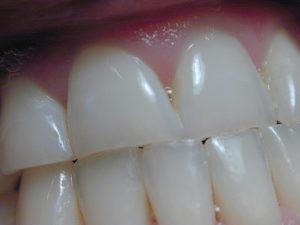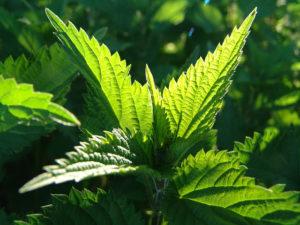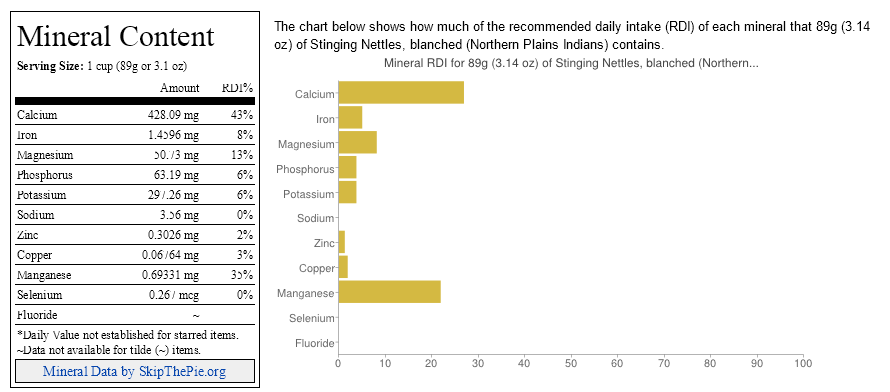 The enamel coating that protects your teeth is 96% mineral – the highest mineral content in any human tissue. That makes it the strongest tissue in your body. But like any other tissue, you need to care for it – at least if you want it to stay healthy and whole.
The enamel coating that protects your teeth is 96% mineral – the highest mineral content in any human tissue. That makes it the strongest tissue in your body. But like any other tissue, you need to care for it – at least if you want it to stay healthy and whole.
One of enamel’s fiercest enemies is, of course, the sugary, acidic Standard American Diet. Not only does it thwart your body’s efforts to remineralize your teeth, it actually demineralizes them, as well.
A nutrient-rich diet, on the other hand, supports healthy, ongoing remineralization.
And it’s not just about calcium, although that indeed is a critical mineral for keeping teeth strong and sturdy. It’s not just about vitamin D or K or phosphorous. What we really need is a mixed mineral and vitamin cocktail in our diet, as many nutrients require the presence of others to work effectively.
There are many minerals that play a supporting role. They’re called “trace minerals,” as, normally, we only need tiny amounts of things like iron, chromium and zinc. But if one of those miniscule pieces of the puzzle is missing, the remineralization process can be set back.
Like all essential nutrients, minerals are best supplied through plants – which absorb them from the soil – or through the meat, milk, cheese, butter and eggs of animals that feed on those plants. Excellent whole food sources of minerals include dark, leafy greens and other vegetables, nuts, and seeds, whole grains, legumes and meat. (Whole food matters, as the more our food is processed, the more nutrients it loses.) Foods that deplete minerals include coffee, soda, sugar and alcohol.
Many herbs and spices contain minerals, too, and one in particular stands out as an excellent source of many of the nutrients critical to enamel integrity: stinging nettle.
 The herb Urtica dioica, commonly known as nettle, is probably one of the most useful plants available to mankind. Though it’s prickly nature makes it hard to harvest (a sting from a nettle plant can cause swelling and itching like a bug bite), it’s rich in protein, fiber, vitamins and, most importantly, minerals.
The herb Urtica dioica, commonly known as nettle, is probably one of the most useful plants available to mankind. Though it’s prickly nature makes it hard to harvest (a sting from a nettle plant can cause swelling and itching like a bug bite), it’s rich in protein, fiber, vitamins and, most importantly, minerals.
Humans have been braving nettle’s sting for centuries. With its spinachy-cucumbery flavor, it is found in many delectable recipes all over the world and was once prized by the Native Americans as a nutrient source in the spring when other food sources were scarce.
Medicinally, nettles have been used throughout history to treat allergies, kidney and urinary tract disorders, digestive disorders, musculoskeletal issues, skin irritation, hemorrhage, flu, arthritis and gout. In the old days, it was common practice to flog oneself with nettle branches to relieve joint pain!
Thankfully nowadays we have time tested recipes like Nettle Soup, Nettle Pesto and delicious teas, as well as products like capsules and tinctures.
And how much of a mineral-laden punch do you get? Check out this chart provided our friends at skipthepie.org:

Look at all those glorious minerals! Lots of calcium, a bunch of manganese, a dash of phosphorus and potassium, a little bit of protein, also a great source of Vitamins A, and K… Nettle equals nutrient heaven for your teeth and bones!
Learn more about cooking with stinging nettle:
- Stinging Nettle Recipes: What It Is & How to Cook It (HuffPo)
- Grasping the Nettle (honest-food.net)
- Stinging Nettles: 8 Recipes for Spring Cooking (the kitchn)
Images by SuperFantastic & zen Sutherland, via Flickr